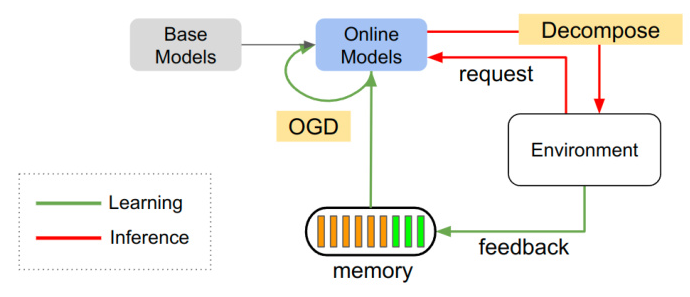Authors:
Cyril Shih-Huan Hsu、Danny De Vleeschauwer、Chrysa Papagianni
Paper:
https://arxiv.org/abs/2408.08968
Introduction
The advent of the fifth generation (5G) of mobile communication technology has revolutionized the way networks are designed and managed. One of the key innovations in 5G is network slicing, which allows the creation of multiple End-to-End (E2E) logical networks on a shared infrastructure. These slices are tailored to meet specific service requirements, which are defined in Service Level Agreements (SLAs). SLAs are contracts between service providers and tenants, specifying the expected Quality of Service (QoS) through measurable benchmarks known as Service-Level Objectives (SLOs).
In a multi-domain network slice, each domain must uphold the E2E SLA, necessitating the decomposition of the E2E SLA into partial SLAs for each domain. This paper introduces an online learning-decomposition framework that dynamically updates risk models using recent feedback, enhancing the stability and robustness of SLA decomposition in dynamic environments.
Related Work
Several methods for SLA decomposition have been studied, including heuristic approaches and machine learning-based methods. Previous works have demonstrated the success of combining machine learning and optimization-based solutions for SLA decomposition. However, these methods often fail to account for the dynamic nature of network environments, leading to sub-optimal performance. This paper builds on previous research by proposing an online learning-decomposition framework that continuously updates risk models to adapt to changing conditions.
Research Methodology
SLA Decomposition and Risk Models
An E2E SLA is a collection of SLOs linked to specific performance indicators, such as delay and throughput. The decomposition of an E2E SLA into domain-specific SLOs is formulated as an optimization problem that minimizes the overall risk. The risk model for each domain is defined as the negative logarithm of the acceptance probability of a request with specific SLOs. These risk models are parameterized using neural networks, which are updated based on feedback from domain controllers.
Dynamicity
The dynamic nature of network environments, influenced by factors such as traffic intensity and user behavior, necessitates continuous learning and adaptation of risk models. The acceptance probability of requests within a domain varies over time, requiring periodic updates to the risk models based on recent feedback to maintain their relevance and accuracy.
Experimental Design
Simulation Environment
The simulation environment follows the analytic model and data generation process proposed in previous works. Data is generated for three domains, with the acceptance probability of requests being inversely proportional to the current traffic intensity. This dynamicity is modeled using a time-dependent factor that reflects changing traffic conditions over time.
Evaluation Scenarios and Metrics
The performance of the proposed framework is evaluated using the average acceptance probability over time and a resilience test against corrupted feedback labels. The average acceptance probability is calculated as the product of the individual acceptance probabilities across all domains. The resilience test assesses the framework’s robustness by introducing a corruption probability for feedback labels.
Configurations
The evaluation includes an ablation study to assess the contribution of each component of the proposed framework. The methods compared include:
- Random: Decomposes each incoming request’s E2E SLA uniformly at random.
- Static: Involves a one-time training of risk models using feedback from a single prior run with the Random method.
- RADE/RADE*: The proposed framework with and without the FIFO memory buffer, respectively.
- OPT: An exhaustive search to find the decomposition assignment that yields the highest E2E acceptance probability.
Results and Analysis
Average E2E Acceptance Probability
The average E2E acceptance probability across different arrival rates shows that the Static method consistently exhibits the lowest performance. RADE* improves over the Static method, while RADE outperforms both, highlighting the importance of the FIFO memory buffer in enhancing robustness and stability. The OPT method achieves the highest performance, serving as a theoretical upper bound.

E2E Acceptance Probability Over Time
The E2E acceptance probability over time for one run shows significant fluctuations and lower performance for the Static method. RADE* performs well initially but degrades sharply during periods of low traffic. RADE consistently maintains higher and more stable acceptance probabilities across different arrival rates.

Resilience Test
The resilience test under varying corruption rates demonstrates that RADE maintains a higher acceptance probability compared to RADE*, due to the use of the FIFO memory buffer. This highlights RADE’s robustness against corrupted feedback.

Overall Conclusion
This paper presents an online learning-decomposition framework for SLA management in dynamic multi-domain environments. By continuously updating domain-specific risk models based on recent feedback, the proposed framework effectively addresses the challenges posed by the dynamicity of real-world systems. The use of online updates and FIFO memory buffers enhances the stability and robustness of SLA decomposition, ensuring prompt adaptation to changing network conditions. Empirical results demonstrate that the framework outperforms state-of-the-art static methods, offering more resilient and accurate SLA decomposition even with limited data availability.
Future work will explore the potential of Deep Reinforcement Learning (DRL) to further enhance the SLA decomposition process, leveraging its ability to learn optimal long-term policies through interaction with dynamic environments.



